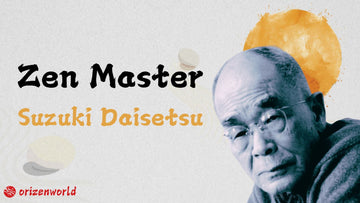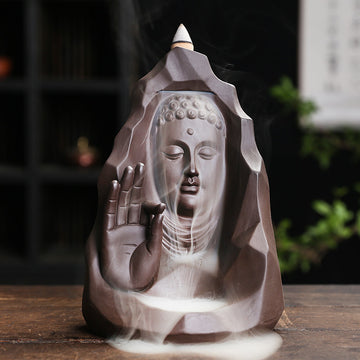Calligraphy is a cherished art form in East Asia, especially in China, where it holds deep cultural significance. Many people are drawn to learn Chinese calligraphy, believing that it can cultivate inner peace and patience, helping to improve both character and mindfulness.
This belief has led many parents to encourage their children to practice this traditional art. But why has Chinese calligraphy gained such popularity, and what is the history behind it?
The roots of Chinese calligraphy trace back thousands of years, intertwined with the development of written Chinese characters and their profound connection to philosophy and spirituality.
In today’s article, we will explore the rich history and cultural importance of Chinese calligraphy, delving into its enduring appeal. Let’s dive in!
Chinese calligraphy has a rich history dating back over 4,000 years, evolving alongside the development of written Chinese characters. The earliest forms of calligraphy appeared during the Shang Dynasty (1600–1046 BCE), with inscriptions on oracle bones and bronze vessels.

The Shang Dynasty's bronze inscriptions, known as "Jinwen," are among the earliest forms of Chinese writing, providing historical insights.
Over time, calligraphy became an important medium for communication, culture, and art. During the Qin Dynasty (221–206 BCE), the unification of written script played a key role in fostering national unity and establishing a standardized writing system.
In Chinese civilization, calligraphy is more than just an art form—it's a reflection of cultural identity, intellectual achievement, and philosophical values. Ancient Chinese scholars and officials viewed calligraphy as an expression of one's character and moral integrity.
Confucianism, Taoism, and Buddhism all contributed to the way calligraphy was practiced, with each school of thought emphasizing the importance of balance, harmony, and self-cultivation.
Throughout Chinese history, calligraphy was considered one of the "Four Arts" that every scholar should master, alongside music, chess, and painting. The act of writing was seen as an exercise in cultivating inner virtues, making calligraphy not just a skill, but a spiritual practice tied to personal growth and discipline.
The Four Treasures of the Study—brush, ink, paper, and inkstone—are the essential tools used in Chinese calligraphy, each playing a crucial role in the artistry and execution of this ancient art form.
The brush is perhaps the most important tool, as it allows for fluid, expressive strokes. Brushes come in various shapes and sizes, and the choice of brush directly influences the style and character of the writing. Traditionally, brushes are made from animal hair, such as goat, wolf, or rabbit, which provides the right balance of softness and firmness for calligraphy.
Ink in Chinese calligraphy is usually made from ink sticks that are ground on an inkstone with water. The ink's consistency and depth are vital for achieving the desired effect. The quality of ink can vary from matte to glossy, influencing the final result and the richness of the strokes.
Paper in Chinese calligraphy is typically made from rice paper or Xuan paper, known for its absorbency and texture, which enables the ink to spread beautifully. Lastly, the inkstone is used to grind the ink stick, and its surface can affect the ink's smoothness. These four tools are integral to the creation of Chinese calligraphy, each contributing to its unique beauty.

The Four Treasures of the Study—brush, ink, paper, and inkstone—are essential tools for calligraphy. Some practitioners also burn incense to enhance the ambiance and focus during their work.
Chinese characters are logograms, meaning each character represents a word or concept. Unlike alphabetic writing systems, Chinese is composed of thousands of individual characters, many of which are formed from smaller components called radicals and components.

In Chinese, pictographs originated from real-life images, evolving over time into the modern characters used today.
Radicals are the building blocks that help define the meaning of a character, and they are typically combined in different ways to form new characters. These characters are often based on pictorial representations, making Chinese calligraphy not just a form of writing but an art of visual expression.
The structure of each character is meticulously designed, with balance and harmony being key principles. In calligraphy, the stroke order and direction are essential for maintaining the character's proper form.
Correct stroke order ensures that characters are balanced, aesthetically pleasing, and easy to recognize. For example, a common rule is to start from the top left and move to the bottom right. Writing out of order can disrupt the rhythm of the character, making it look uneven and less graceful.
The practice of Chinese calligraphy involves careful attention to the direction and flow of each stroke. Mastery of stroke order not only ensures the accuracy of the characters but also enhances the beauty of the writing, as each stroke contributes to the overall rhythm and flow of the piece.

Chinese calligraphy requires strict adherence to stroke order, with specific techniques to ensure balanced, fluid characters that enhance the aesthetic quality of the writing.
Chinese calligraphy has developed over centuries, resulting in five major styles, each with distinct characteristics and purposes. The Seal Script (篆书) is the earliest form, dating back to the Qin Dynasty. Its characters are more pictorial and abstract, resembling ancient inscriptions on bronze and stone seals. This style is often used for formal purposes, such as seals and official stamps.

The five major calligraphy styles each possess unique aesthetics, reflecting different historical periods, cultural values, and artistic expressions in Chinese writing.
The Clerical Script (隶书), emerging during the Han Dynasty, features more regular and simplified strokes than Seal Script, making it easier to write. It is commonly used in historical texts and inscriptions. Regular Script (楷书) is the most widely used calligraphy style today, characterized by clear, standard strokes. It is taught to beginners and often used for books, documents, and formal writing.
Running Script (行书) combines elements of Regular Script and Cursive Script, allowing for fluidity and speed. It is commonly used in daily writing, blending legibility with artistic expression. Finally, Cursive Script (草书) is the most artistic and free-flowing style, with exaggerated, rapid strokes, often used for personal expression in artistic works. Each style reflects different aspects of Chinese culture and history.
Chinese calligraphy relies heavily on mastering fundamental brush strokes, which form the foundation for all characters. The basic strokes include horizontal (横), vertical (竖), dot (点), and hook (提). Each stroke is essential to writing Chinese characters properly and harmoniously. The careful execution of these strokes reflects both technical skill and aesthetic sensibility.
To form these strokes correctly, one must first understand how to hold the brush. The brush should be held with a relaxed grip, allowing flexibility and control. The brush’s tip must make contact with the paper at the right angle, and pressure should be adjusted according to the stroke type. Practicing each stroke repeatedly will help develop muscle memory and consistency in writing.

In Chinese calligraphy, hold the brush with a relaxed grip, using the thumb, index, and middle fingers, ensuring control while allowing flexibility for smooth, fluid strokes.
Proper posture is also key to good calligraphy practice. Sitting up straight and maintaining a balanced posture ensures the flow of energy through the body and helps keep the brush steady. It’s also important to maintain smooth and steady breathing, which helps to keep the mind focused and relaxed during the creative process. Through consistent practice, these techniques can be refined and turned into fluid, expressive calligraphy.
Chinese calligraphy is not just a form of writing but an art that embodies the principles of balance, harmony, and rhythm. In traditional Chinese aesthetics, these elements are considered vital for achieving beauty in all forms of art.
Calligraphy is seen as a perfect reflection of one’s inner state of mind, where each stroke must flow with grace and precision, maintaining a visual balance between strength and delicacy. This aesthetic philosophy mirrors many other Chinese art forms, including painting and poetry, where harmony with nature and the universe is central.
One of the key concepts in Chinese calligraphy is "spirit" (气韵, qì yùn), which refers to the vitality or life force expressed through each stroke. This idea is believed to reflect the calligrapher’s emotions, intentions, and philosophical beliefs.
The brushwork is not merely a technical act but a spiritual one, where the energy and essence of the calligrapher are transmitted onto the paper.

Wang Xizhi, a renowned calligrapher of the Jin dynasty, exemplified this concept with his free-flowing, expressive style, becoming a symbol of artistic freedom in Chinese culture.

Emperors in Chinese history, such as Emperor Taizong of the Tang Dynasty, were also fond of calligraphy. Their written works, like the famous "Stele of the Emperor’s Calligraphy," remain influential and showcase the intersection of governance, art, and philosophy. For these rulers, calligraphy was an important way to demonstrate their cultural and intellectual sophistication.
Chinese calligraphy remains a cherished art form, highly regarded both in China and internationally. Today, traditional calligraphy continues to be practiced in art studios, schools, and by individuals seeking to preserve its rich history.
Calligraphy often appears in prestigious art auctions, where works by famous masters or calligraphy scrolls fetch high prices. These pieces are considered valuable not only for their historical and cultural significance but also for their beauty and craftsmanship. As a result, Chinese calligraphy has become a staple of both private collections and public galleries worldwide.
In contemporary times, there has been a growing trend to blend traditional calligraphy with modern artistic expressions. Many contemporary calligraphers experiment with different styles, merging classic techniques with elements of modern design, and even digital technology.
This fusion of old and new has led to the evolution of calligraphy into a more versatile art form that resonates with younger generations. Calligraphy exhibitions now showcase a broad range of styles, reflecting the ongoing creativity in the field.
Moreover, many people today view Chinese calligraphy as a form of therapy to alleviate stress and anxiety. The practice of writing with a brush, focusing on each stroke, allows individuals to connect with their inner selves and cultivate mindfulness. This meditative aspect of calligraphy is increasingly recognized for its ability to promote relaxation, mental clarity, and emotional healing, making it a popular activity for those seeking to improve their well-being.

Many people pray before practicing calligraphy, seeking spiritual guidance and inner peace, as the art is deeply meditative.








